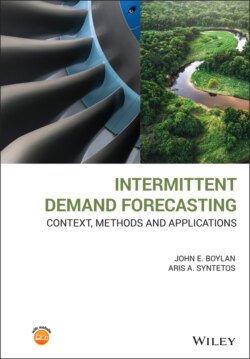Читать книгу Intermittent Demand Forecasting - John E. Boylan - Страница 52
2.5.4 Variations of the Periodic Policy
ОглавлениеThe can be viewed as a periodic implementation of the policy or as a special case of the policy for . The latter is an example of an policy, which may be operated under continuous or periodic review.
Schultz (1987) discussed a periodic policy for the control of intermittent demand items. At the end of every review interval, the inventory position is checked against the base stock level . If the inventory position is less than or equal to , an order is calculated to bring the inventory position up to ; otherwise, no order is needed. The policy's normal mode of operation is to place a replenishment order at the time the order is calculated, i.e. at the end of the review interval. Alternatively, a replenishment delay (of several periods) may be introduced with the aim of reducing inventory holding costs, if only minor increases in the cost of stockouts is expected. This modification was shown theoretically to offer considerable cost benefits (i.e. inventory holding cost savings that outweigh the increased cost of a stockout condition).
Schultz's proposition covers the inventory system against the possibility that one demand will occur during the lead time plus review interval. Necessary assumptions in this model's implementation are the following: (i) lead times are small, as compared to the average inter‐demand interval and (ii) the cost of reordering is small relative to the cost of holding sufficient inventory to meet more than one order.
The first assumption is clearly very restrictive. However, some work has been conducted to exploit the fact that the lead time (plus review interval) may indeed sometimes be less than the average inter‐demand interval. Syntetos et al. (2009a) developed a modified policy that was shown empirically to perform very well for such cases. The database used for experimentation contained demand histories and lead times for 5000 SKUs from the Royal Air Force. About 50% of the sample met the qualifying condition for inclusion in the experiment (i.e. that the lead time plus review interval is less than the average inter‐demand interval) showing that models exploiting this information may be very useful in practice. However, the fact remains that they cannot be used for all intermittent demand SKUs and we do not consider them further in this book.
